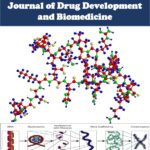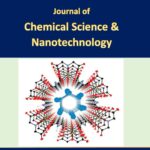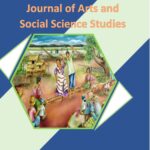All submitted manuscripts undergo extensive peer-review process and circulate among Authors, Editors/Associate Editors, Reviewers and Editorial Office before final publication. Generally, this is a single-blind process where recommendation of more than two reviewers is sought and finally a decision is commented directly by the Editor-in-Chief or indirectly via associate/academic editor.
The whole process consists of below-provided editorial workflow, and following sections provide notes on each step:
Quality Control
All submitted manuscripts are initially quality controlled by the Editorial Office for suitability of the manuscript to the intended journal, manuscript formatting, reference provision, plagiarism checking and completion of all necessary files required to perform review process.
Peer Review Process
Once initial quality controls are passed, the manuscript is forwarded to appropriate Editor or Associate Editor depending upon whether it is a regular manuscript, part of the special issue or Guest Editorial. In case of a conflict of interest, a suitable Editorial Board Member is selected. Assigned handling editor decides the initiation of review process or decline to do so based on the quality of the presented work and scope of the journal. If Editor finds the manuscript of high quality and is within the aims and scope of the journal, the manuscript is sent to expert reviewers in the field and aimed to collect more than two reviewer’s recommendations. The process is single-blind for most journals, meaning that the author does not know the identity of the reviewer, but the reviewer knows the identity of the author. Some journals operate double-blind peer review and/or open peer review process.
To assist our editors, editorial assistant handle all communication with reviewers, authors, and the external editor. Reviewers are given two weeks to write their review. For the review of a revised manuscript, reviewers are asked to provide their report within three days. In both cases, extensions can be granted upon request.
A paper can only be accepted for publication by editor without any involvement of the Researcher Links staff, however, they bridge the communication between editors and
authors and deal all technical issues if required.

Editor Decision
Based on the reviewers’ comments, suggestions and overall assessments, Editor recommends one of the following options:
(a) Accept, (b) Reject, (c) Minor revision, (d) Major revision, (e) Returned.
The rejected manuscripts are closed, whereas, manuscripts with minor or major revision are require appropriate actions from the Author for re-consideration by the Editor. The Editor either makes final recommendations or considers another round of review process.
Production
In case of acceptance, Authors are notified and the Publisher initiate the production process that include copy-editing, language editing, proofreading, reference linking, metadata generation for indexing and publication purposes. Authors are also requested to improve the language if required before the initiation of production process.
The Role of the Editor-in-Chief
Editor in Chief is a final and decisive authority to make any recommendations on submitted manuscripts without involvement of the Editorial Office. This is mainly due to the fact that Editors are leading personnel in the field and they make their recommendations on the bases of reviewers’ assessment. Also Editor can’t play external reviewers’ roles, except in occasional cases, to have fair, highly professional and dynamic peer-review system. Editor in Chief also approves the editorial board members and mainly involve in the selection of the special issues in the journal.











